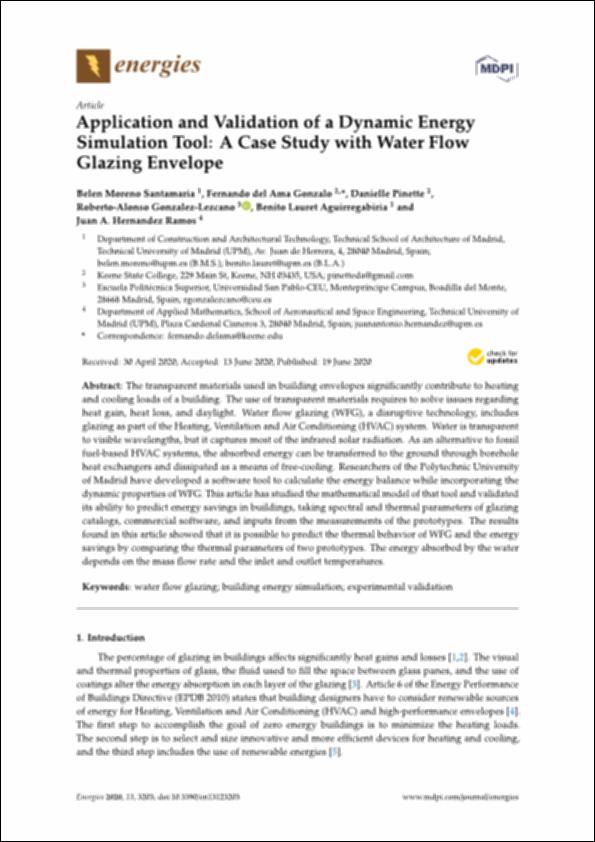Please use this identifier to cite or link to this item:
http://hdl.handle.net/10637/14592Application and Validation of a Dynamic Energy Simulation Tool: A Case Study with Water Flow Glazing Envelope
| Title: | Application and Validation of a Dynamic Energy Simulation Tool: A Case Study with Water Flow Glazing Envelope |
| Authors : | Moreno Santamaria, Belén Del Ama Gonzalo, Fernando Pinette, Danielle González Lezcano, Roberto Alonso. Lauret Aguirregabiria, Benito Hernández Ramos, Juan Antonio |
| Keywords: | Water flow glazing; Building energy simulation; Experimental validation |
| Publisher: | MDPI |
| Citation: | Moreno Santamaria, B.; del Ama Gonzalo, F.; Pinette, D.; Gonzalez-Lezcano, R.-A.; Lauret Aguirregabiria, B.; Hernandez Ramos, J.A. Application and Validation of a Dynamic Energy Simulation Tool: A Case Study with Water Flow Glazing Envelope. Energies 2020, 13, 3203. https://doi.org/10.3390/en13123203 |
| Abstract: | The transparent materials used in building envelopes significantly contribute to heating and cooling loads of a building. The use of transparent materials requires to solve issues regarding heat gain, heat loss, and daylight. Water flow glazing (WFG), a disruptive technology, includes glazing as part of the Heating, Ventilation and Air Conditioning (HVAC) system. Water is transparent to visible wavelengths, but it captures most of the infrared solar radiation. As an alternative to fossil fuel-based HVAC systems, the absorbed energy can be transferred to the ground through borehole heat exchangers and dissipated as a means of free-cooling. Researchers of the Polytechnic University of Madrid have developed a software tool to calculate the energy balance while incorporating the dynamic properties of WFG. This article has studied the mathematical model of that tool and validated its ability to predict energy savings in buildings, taking spectral and thermal parameters of glazing catalogs, commercial software, and inputs from the measurements of the prototypes. The results found in this article showed that it is possible to predict the thermal behavior of WFG and the energy savings by comparing the thermal parameters of two prototypes. The energy absorbed by the water depends on the mass flow rate and the inlet and outlet temperatures. |
| URI: | http://hdl.handle.net/10637/14592 |
| Rights : | http://creativecommons.org/licenses/by-nc-nd/4.0/deed.es |
| ISSN: | 1996-1073 |
| Issue Date: | 19-Jun-2020 |
| Center : | Universidad San Pablo-CEU |
| Appears in Collections: | Escuela de Politécnica Superior |
Items in DSpace are protected by copyright, with all rights reserved, unless otherwise indicated.


